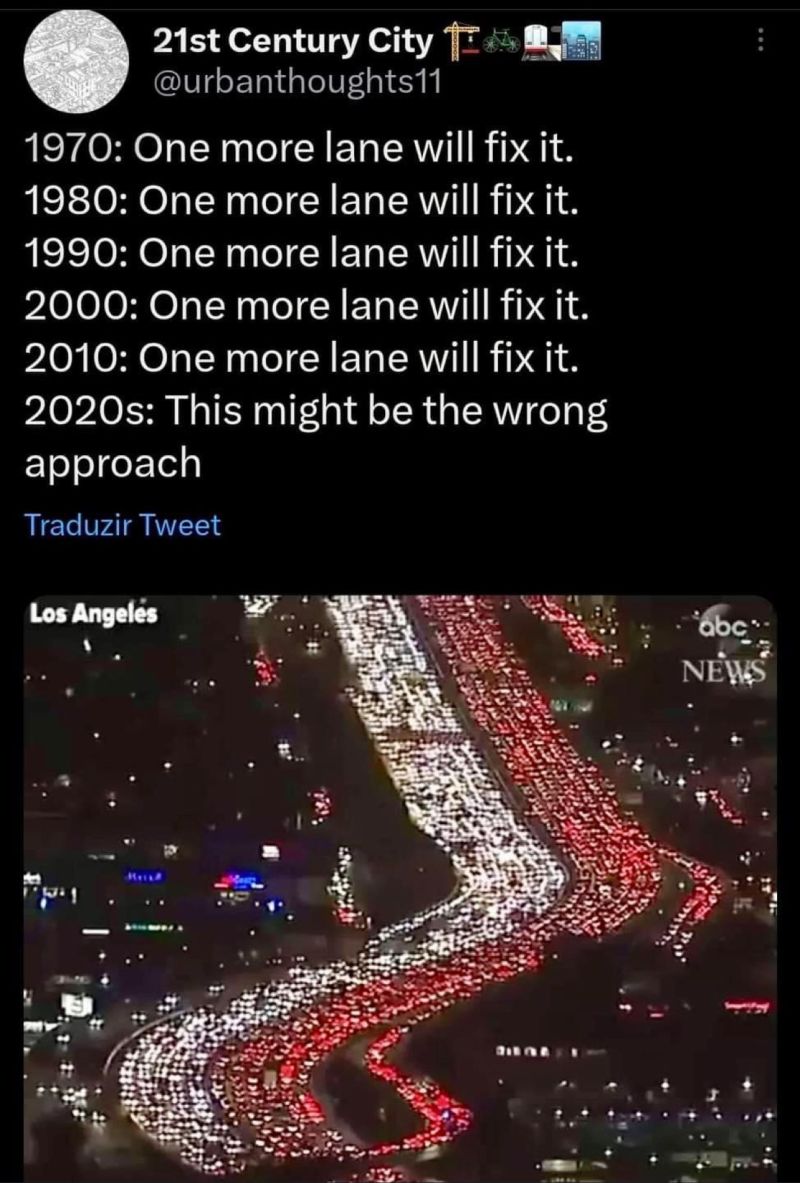this post was submitted on 09 May 2024
1225 points (97.4% liked)
Memes
44094 readers
2418 users here now
Rules:
- Be civil and nice.
- Try not to excessively repost, as a rule of thumb, wait at least 2 months to do it if you have to.
founded 5 years ago
MODERATORS
you are viewing a single comment's thread
view the rest of the comments
view the rest of the comments

Just going to leave this one here:
I don't really like including pedestrians in there. Like sure, you can fit a bunch of people in a small area, but another point you shouldn't ignore is the throughput over time, and pedestrians are by their nature rather slow. Obviously if you're looking at shopping in a street lined by shops left and right, then that street becomes tailor-made for pedestrian traffic (and nothing else except perhaps bicycles). But public transport is much better suited for travelling any further distances, and that should be the main focus when deciding to ditch cars.
Sure! Both speed and distance matters a lot for throughput. The advantage of pedestrian traffic is that designing for it reduces the distance people have to travel and that it combines very well in conjunction with public transport, unlike cars. Also, the speed of mixed traffic is inverse correlated to the number of vehicles, hence is a special case in this regard where throughput may decrease as the volume per lane increases. The overall point however is that a single train can substitute a staggering amount of private vehicles (and who doesn't love leaning back, listening to music and reading the news while commuting?).
The units are passengers per hour. If they didn't account for speed, pedestrians would theoretically be one of the highest, since you can pack people together fairly tightly and still have them walk.
That reminds me of how shipping hard drives full of data is technically faster than downloading over the internet. Technically true, but almost always a poor choice in practice.
I wonder what the people/hour max is on something like a stadium entrance or hallway? I bet it's insanely high. Definitely some safety concerns though with crushing or trampling
That’s why pedestrians are in there
If you design your cities well people live near the places which people want to visit, and pedestrian speed is fine
Lots of cities are well designed, though most that were so designed in the US got modified after cars became important
That may be true for smaller cities, but in bigger cities it becomes impossible, because there just isn't enough space to house all the people near areas of interest. Cars don't factor in there at all. Give me a subway for the major areas, and perhaps a tram or bus system so you don't need that many subway stations in the residential areas, and you can have car-free city centers.